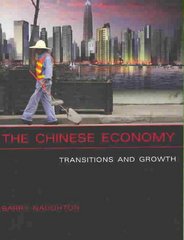Question
Consider a policy-setting game for the regulation of globalpollution between two symmetric countries.Each country'sgovernment wants to make the sum of consumer and producer surplusas large
Consider a policy-setting game for the regulation of globalpollution between two symmetric countries.Each country'sgovernment wants to make the sum of consumer and producer surplusas large as possible. However, the government values consumer and producer surplus differently. From the government's perspective, total surplus isCS + (1-)PS where is a number between 0 and 1. For example, = 1 would correspond to the case where the government only cares about consumer surplus and does not care about producer surplus at all, = 0 would be the opposite, and = 0.5 would value them equally.
Consumers prefer more regulations in both countries.When both counties are regulatedconsumer surplus is C.When only one country is regulatedconsumersurplusis C - (since global pollution crosses borders).When both countries are unregulatedconsumersurplusisC - 2.Producers prefer less regulations in their country.When only their country is not regulatedproducersurplusis P.When only their country is regulatedproducersurplusis P- (since regulation involves a large cost).When both countries are regulatedproducersurplusis P - 0.5 (because of global competition).As a result, the payoff matrix for each country from the government's perspectivecan be represented:
| Domestic \ Foreign | Foreign Regulates | Foreign Does Not Regulate |
| Domestic Regulates | C + (1-)(P-) , C + (1-)(P-) | (C-) + (1-)(P-) , (C-) + (1-)P |
| Domestic Does Not Regulate | (C-) + (1-)P, (C-) + (1-)(P-) | (C-2) + (1-)(P-0.5), (C-2) + (1-)(P-0.5) |
1) For convenience, let P = C. Suppose also that = Cfor between 0 and 1. This will simplify things nicely, for example, that consumer surplus when only one country regulates will be C(1-).Above a value of = ____________. Fill in the blank, read surrounding text. the government would prefer to regulate provided that the other country does not regulate.Round to two decimal places (e.g., 7.555 becomes 7.56).
2)Continue to let P = C and = C.If = 0.6, the Nash equilibrium will be:
- A.
One country regulates, one does not.
- B.
Both countriesregulate.
- C.
Neither country regulates.
3)Continue to let P = C and = C.If = 0.4, the Nash equilibrium will be:
- A.
One country regulates, one does not.
- B.
Both countriesregulate.
- C.
Neither country regulates.
4)Continue to let P = C and = C.If = 0.2, the Nash equilibrium will be:
- A.
One country regulates, one does not.
- B.
Both countriesregulate.
- C.
Neither country regulates.
Step by Step Solution
There are 3 Steps involved in it
Step: 1

Get Instant Access to Expert-Tailored Solutions
See step-by-step solutions with expert insights and AI powered tools for academic success
Step: 2

Step: 3

Ace Your Homework with AI
Get the answers you need in no time with our AI-driven, step-by-step assistance
Get Started


